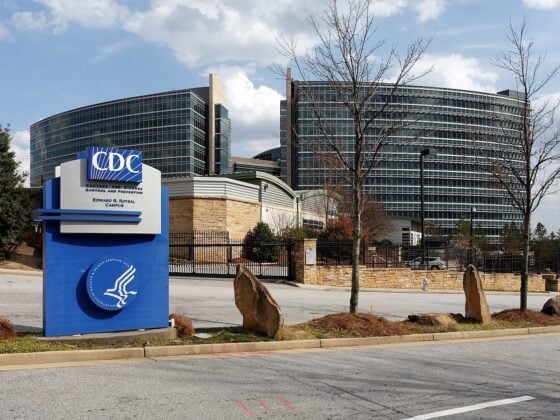So healthcare advocates take note: prevention and early screening measures are worth it! The staggering costs associated with cancer care – an estimated $19.7 billion in 2018 for breast cancer alone, also reflect tremendous personal and societal costs affecting productivity and quality of life. While modern, cutting-edge prevention and treatment techniques can be costly in and of themselves, the World Health Organization (WHO) cites studies showing care costs for cancer patients diagnosed early are two to four times less expensive compared to those diagnosed at advanced stages. Of the $80.2 billion spent on direct medical costs of cancer treatment in 2015, 38 percent was spent on inpatient hospital stays, which are more likely to occur in advanced and late stage cancer procedures.
Health insurance: a foundation for prevention and treatment
Lack of health insurance is a serious barrier to early diagnosis and treatment. Uninsured patients are more likely to be diagnosed with late-stage cancer, when treatment is often more complicated, expensive, and less successful. Thanks to the Affordable Care Act (ACA, also known as Obamacare), 20 million people have gained health insurance, with the largest increase among those with low incomes. The Cancer Action Network, the advocacy affiliate of the American Cancer Society, supports many of the key patient protections included in the ACA, recognizing that it has improved health outcomes and the burden of cancer in the U.S.
All health insurance plans offered through the ACA, and many private insurance plans, cover preventive screenings at no cost. Mammograms, colonoscopies, and low-dose CT scans for lung cancer detection are examples of covered screening tests. Check your plan as some short-term plans and plans that were grandfathered in before the ACA often do not include essential benefits such as free screenings.

Prevention and screening are essential
Prevention, as the adage goes, is worth a pound of cure. While some cancer risks involve factors we cannot control, such as age, gender, ethnic background, and family history, the ACS says that about 750,000 cases of cancer that will be newly diagnosed in 2020 are potentially avoidable. Encouraging behavior changes to stop smoking, eat well, moderate alcohol consumption, and get people moving, are good places to start early prevention efforts. And screenings don’t just detect cancer early, which makes treatment more successful. In the cases of colorectal and cervical cancer, screenings can detect precancerous lesions that can be removed before cancer fully develops.
CDC recommended screenings and vaccines
More than 16.9 million American with a cancer history were alive on January 1, 2019. Many were diagnosed years ago and have no current evidence of cancer. These screenings are recommended by the Centers for Disease Control and Prevention (CDC) and can be easily integrated into routine medical check-ups.
- Breast cancer. Mammograms are an x-ray of the breast, and this test is the best way to find early breast cancer. Most insurance plans cover the test every one to two years for women. Some guidelines call for beginning screenings as early as age 40, and all concur they should begin by age 50. This CDC link can direct you to state programs offering free or low-cost options.
- Cervical cancer. Two tests can check for early signs of cervical cancer. A vaccine can prevent getting infected with the harmful virus causing this type of cancer.
- Pap test (smear) checks for precancerous cells. Begin screenings at age 21. If a test result is normal, you can wait three years before being screened again.
- HPV test – the Human Papillomavirus (HPV) test looks for the virus that can cause harmful cell changes. Begin screenings at age 30. If results are normal, rescreen every five years.
- HPV vaccine– The vaccine prevents new HPV infections, but doesn’t treat existing ones. Because HPV is commonly transmitted through sexual contact, the vaccine is preferably given before a person is sexually active. Generally, vaccinations are given to preteens (aged 11 to 12 years), but may be given up through age 26.
- Colorectal (colon) cancer. This cancer usuallydevelops from precancerous polyps (abnormal growths) in the colon or rectum. Start colorectal screening at age 50, or earlier if there’s a family history of it, or if you have inflammatory bowel disease (IBS). There’s more than one type of test, so consult with your doctor about the appropriate choice for you. Depending on the results and which test you use, re-screenings may be done annually or every five to ten years. A colonoscopy is the most thorough of the tests, and a doctor can also remove precancerous polyps during the procedure.
- Lung cancer. If you’re a heavy smoker, or have been one within the past 15 years, and are between 55 and 80 years old, a yearly screening with low-dose CT scanis recommended even if you have no symptoms or history of the disease. The scan uses a low dose of radiation to make detailed images of your lungs. It only takes a few minutes and is not painful.
Develop healthy habits to keep cancer away
Healthy habits account for much of the progress that’s been made in preventing cancer deaths. The 2020 Cancer Facts & Figures report estimates that there were at least 2.9 million fewer cancer deaths from 1991 to 2017, and healthy habits certainly played a role in getting the numbers down. We’ve all been drilled with the essential healthy living rules: eat right, lose weight, moderate alcohol, and get physically active. These actions work to prevent cancer and many other diseases and illnesses. Specific to cancer, here are a few more guidelines that will keep cancer away:
- Cut back on red meat as it could be a risk for colorectal cancer. Avoid processed meats such as sausage and bacon. The nitrites and nitrates in these foods may be linked to cancer. While you’re at it, fill the hole in your diet when you cut back on meat by eating more fruits and veggies. They can prevent cell damage or actually fight off cancer-causing agents.
- Use sunscreen. UV rays from the sun cause skin damage that can lead to cancer. Pick a sunscreen with an SPF of 30 or higher. It’s also a good idea to wear a wide-brimmed hat and sunglasses.
- Avoid toxic chemicals. Harmful chemicals are everywhere – in our workplaces, homes, and products we use regularly. Asbestos, radon and benzene are a few that can be harmful to touch, eat, or breathe in. If you work in an environment with chemicals, ask for the Safety Data Sheets (SDS, former known as MSDS) so you can understand potential risks and how to minimize their impact. Or better yet, if you have a union safety committee, turn to them to develop a safety strategy for all types of hazardous materials at work.



